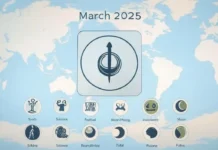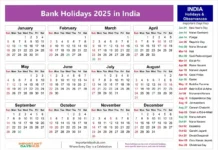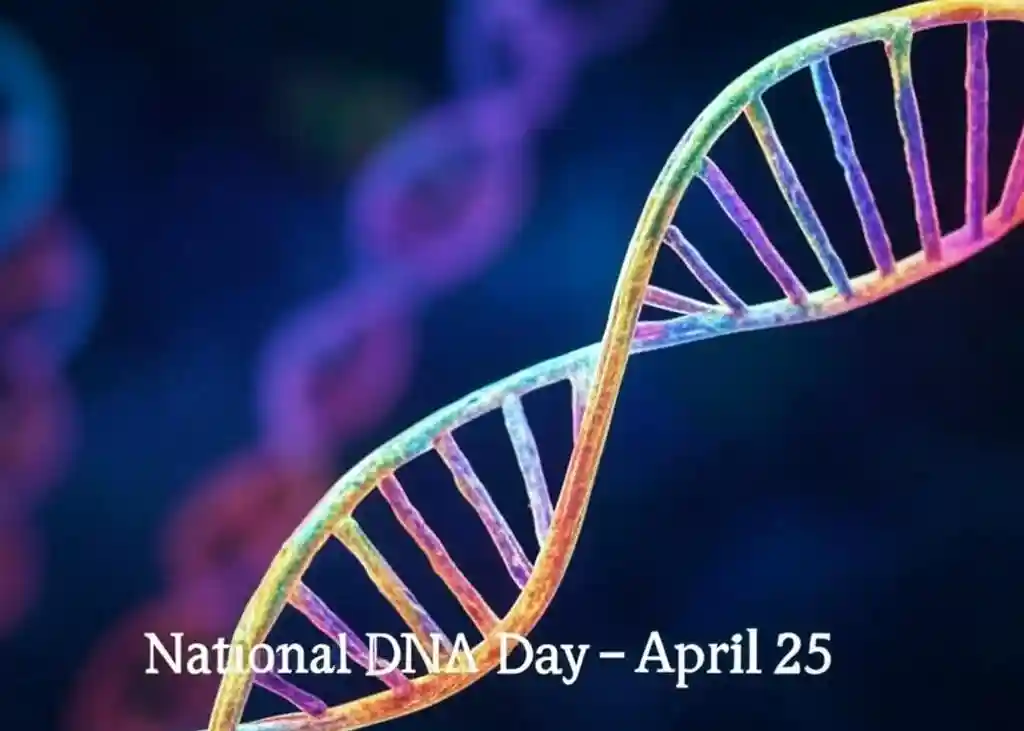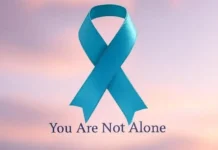National DNA Day, observed annually on April 25, commemorates two pivotal milestones in the field of genetics: the publication of the DNA double helix structure by Watson and Crick in 1953 and the completion of the Human Genome Project in 2003. This day serves as an opportunity to celebrate advancements in genetic research and to promote public understanding of genetics and genomics.
Key Details – National DNA Day 2025
| Aspect | Details |
|---|---|
| Event Name | National DNA Day |
| Date | April 25, 2025 |
| Observed By | Globally (with major participation in the U.S. and scientific communities) |
| Established By | National Human Genome Research Institute (NHGRI) |
| Purpose | To celebrate the discovery of DNA’s structure and the completion of the Human Genome Project |
| First Observed | 2003 |
| Main Activities | Educational events, science fairs, webinars, student competitions, and public lectures |
| Organizing Body | NHGRI (USA), Various global genetics institutions |
| Related Fields | Genetics, Genomics, Biotechnology, Medical Research |
| Global Events 2025 | World DNA Day 2025 Conference in Nara, Japan (April 23–25) |
History and Significance
Discovery of the DNA Double Helix (1953)
On April 25, 1953, James Watson, Francis Crick, and Maurice Wilkins published their groundbreaking paper in the journal Nature, detailing the double helix structure of DNA. This discovery laid the foundation for modern molecular biology and revolutionized our understanding of genetics.
Completion of the Human Genome Project (2003)
In April 2003, the Human Genome Project, an international scientific research initiative, completed the mapping of the human genome. This monumental achievement identified and mapped all the genes in human DNA, providing invaluable insights into human biology and disease.
Observance of National DNA Day
National DNA Day is celebrated through various events and activities aimed at educating the public about genetics and genomics. The National Human Genome Research Institute (NHGRI) leads these observances, offering resources such as the DNA Day Starter Kit, educational materials, and activity ideas for students and educators.
In 2025, the 13th Anniversary World DNA Day (WDD-2025) will be held from April 23–25 in Nara, Japan. This international congress will bring together researchers, scientists, and industry professionals to discuss advancements in life sciences and biotechnology.
How to Participate
- Attend Local Events: Many institutions and organizations host events such as lectures, workshops, and exhibitions to celebrate DNA Day.
- Engage with Educational Resources: Utilize resources like the NHGRI’s DNA Day Starter Kit to learn more about genetics and genomics.
- Share on Social Media: Use hashtags like #DNADay to share your participation and spread awareness.
Fun Facts About DNA
- Genetic Similarity: Humans share approximately 99.9% of their DNA with each other.
- Genetic Overlap with Other Species: Humans share about 40%–50% of their DNA with cabbage.
- Ancient Viruses: Approximately 8% of the human genome is made up of ancient viral DNA.
Frequently Asked Questions (FAQs)
What is National DNA Day and why is it celebrated?
National DNA Day is observed on April 25 each year to commemorate two major milestones in genetic science—the discovery of the DNA double helix in 1953 and the completion of the Human Genome Project in 2003. It’s a day to celebrate scientific advancements and raise awareness about genetics and genomics.
Who started National DNA Day?
National DNA Day was launched by the National Human Genome Research Institute (NHGRI) in the United States in 2003, in partnership with other scientific institutions to promote education and engagement around genetic research.
How is National DNA Day celebrated?
It’s celebrated through a variety of activities like school science fairs, public lectures, workshops, and online events. In 2025, global events like the World DNA Day Conference in Japan (April 23–25) also mark the occasion.
What is the Human Genome Project and why is it important?
The Human Genome Project was an international research effort that successfully mapped all of the genes in human DNA. Completed in 2003, it paved the way for major breakthroughs in medicine, biotechnology, and genetic diagnostics.
How can students and educators get involved in DNA Day?
Students can take part in essay contests, DNA model-making, and science fair projects. Educators can use free resources from the NHGRI like lesson plans, starter kits, and activity guides to introduce students to genetics in a fun and informative way.
























